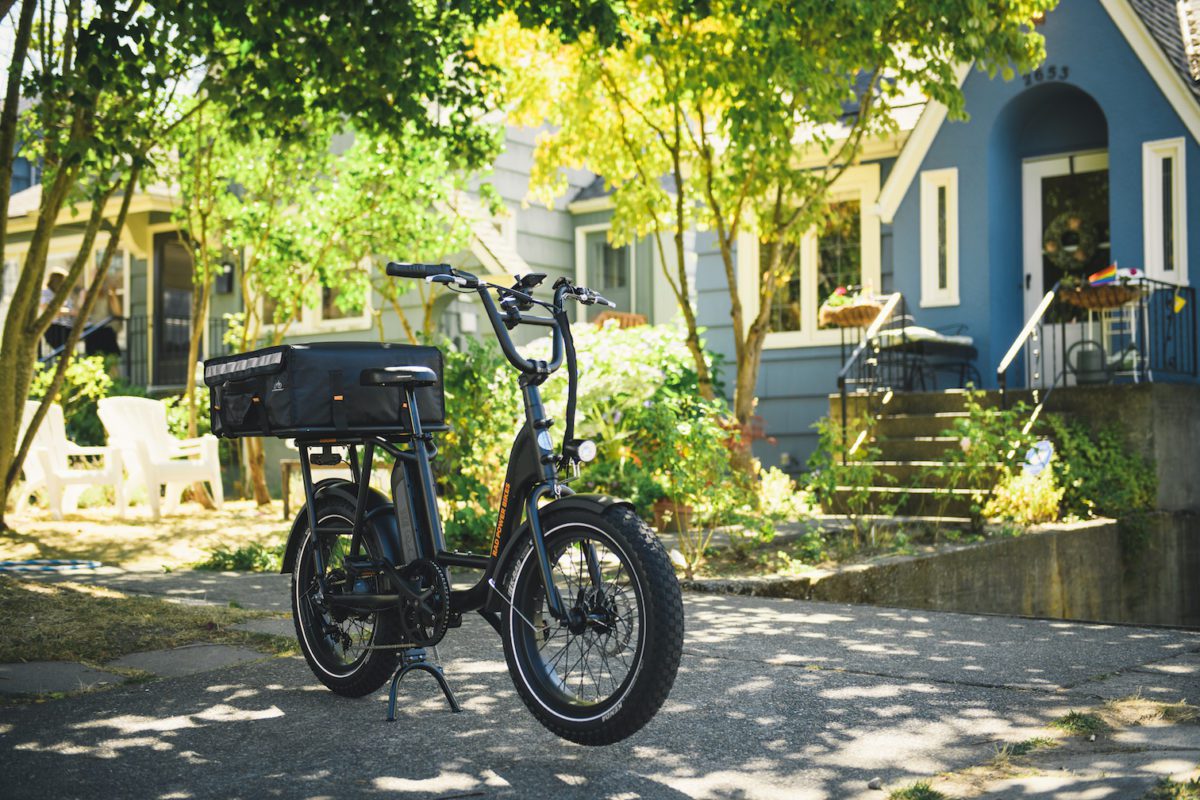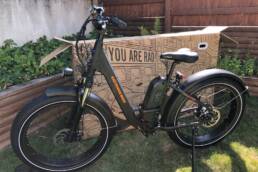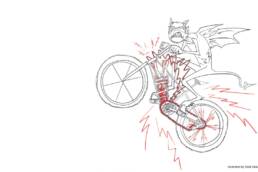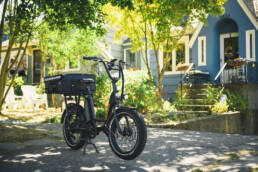One industry that is exploding during Covid is electric bikes. This is why. And if you don’t have one yet, this is why you should get one. Story by Vince Hempsall.
It’s a warm but windy day in Nelson, British Columbia, and the fast-moving Cumulus clouds are projecting shadows on Cedar Street, each chasing the other as if in a protracted race to the horizon. I’m standing on a patch of road-side grass with my two-year-old watching the traffic and am amazed by the number of bicyclists pedalling up the notoriously steep street. Correction, they are electric bicyclists and they’re now a common sight in this hilly city.
There are a few North American industries doing exceptionally well during the Covid-19 pandemic: pharmaceuticals are a given, as are suppliers of disinfectants and cleaning products. Online conference platforms, e-commerce providers and home entertainment services are also making shareholders very happy right now. More surprising are the outliers, the ones we couldn’t predict. Take the manufacturers of toilet paper for example; no one could have imagined the boon the paper products industry experienced.
And then there are electric bicycles. The social distance orders put in place because of Covid have not only changed the way we interact with each other, but also the way we get around, resulting in an unprecedented boom in the demand for alternative transportation. I was one of the early adopters of electric bikes in Nelson after having written a story about them for the summer 2016 issue of Kootenay Mountain Culture Magazine. Today, there are more electric bikes on the road here than traditional ones and many have appeared in the past two months.
This exponential increase that’s happened since the Covid outbreak relates to four factors. Firstly, we’ve been asked to stay at home, negating the need for long-distance travel. Secondly, we’re having to avoid public transportation and cars with other passengers who are not in our immediate circle. Thirdly, global travel has been all but cancelled this year so vacation funds are sitting idle. And finally, we’re bored! Bicycling is one of the few ways we can get some exercise outside the house and still physically distance ourselves. And by injecting a little help in the form of an electric motor, everyone from grandparents and convalescing athletes to healthy commuters and young families can get on a bike and have fun.

The electric bike market was already growing at a rapid pace around the globe before Covid. A Statista report published last October valued the global market for electric bicycles at US$16.34 billion in 2017 and projected an increase to US$23.83 billion by 2025. In another report released by Deloitte last December, it was projected that “130 million e-bikes to be sold globally between 2020 and 2023. It also noted that “the number of e-bikes on the roads will easily outpace other e-vehicles by the end of next year.”
To be clear, electric bikes are not motorcycles: in Canada they’re defined as bicycles with electric motors that do not exceed 500 watts. Patents date back as far as the 1890s but electric bikes really caught on around 2010 with advancements in lithium-ion battery capacity. There are still debates about whether electric bicycles should be allowed on non-motorized mountain bike trails, but everyone agrees they are perfect for the street. They’re also good for the planet. In a May 2019 report by the Transportation Research and Education Center, researchers determined that carbon dioxide emissions fall by roughly 11 percent if electric bikes make up 15 percent of the ways city dwellers choose to get around. That’s because, the average passenger vehicle produces about 4.6 metric tons of CO2 each year, so every kilometre we spend on a bike helps chip away at our carbon footprint. (Five other ways electric bikes help the planet.)
The social distance orders put in place because of Covid have not only changed the way we interact with each other, but also the way we get around, resulting in an unprecedented boom in the demand for alternative transportation.
There are over 200 manufacturers of electric bikes in the world, including regular bike brands that now offer an electric version, but one that stands out for its unique business model is Rad Power Bikes. Founded in 2015, the American company sells exclusively direct-to-consumer in the U.S., Canada, and Europe. It does have a flagship showroom in Seattle and one in Vancouver but the majority of its sales are done over the Internet. This allows the company to keep its prices low, that is, between $1,699 and $2,299 Canadian.
The company has nine models in its stable and the one I’ve seen most around my hometown of Nelson is the RadWagon cargo bike. At Cdn$1,999 it’s over a thousand dollars cheaper than most of the competition and its extended rear rack allows the rider to cart around groceries, gear and kids. In fact, I would argue that aside from aging Baby Boomers, who could use the extra power getting up hills, the next highest demographic who have adopted electric bikes are parents. For example, I own two ebikes mainly because hauling a two-year-old and his younger brother up a steep street is hard work. Without the extra power the electric motors provide, I’d probably just drive my car.

Of course, there are the exceptions such as my 16-year-old neighbour Max Ramos-Swanston, who owns the RadRunner, what Rad calls its “electric utility bike.” I asked him why he decided to get an electric bike and he responded, “Nelson is a really hilly town and so I never biked around it much; I’d get car rides with my mom or I’d just walk. The first time I rode an electric bike it was so fun. It was extraordinarily easy to go uphill.” When asked why he got the RadRunner specifically he said, “Because I can ride around with my girlfriend on the back.”
Have more questions about ebikes and whether you should get one? Click here for the answers.
Because of Rad’s direct-to-consumer business model I was curious how Max navigated setting up his own electric bike. “It arrived in a box and I had to put it together but it was pretty easy. Some of the bike fenders were a bit confusing but there are a lot of helpful videos online so I figured it out.” For further support, the company’s website says, “We have a big product support team available via phone or email to troubleshoot any issues and answer any questions to ensure customers can continue to Ride Rad for many years to come.”
The other models in Rad’s quiver include the flagship fat tire electric bike, the RadRover, the RadCity commuter bike, the folding RadMini and each has a step-thru version. To learn more about these, and all other things related to Rad Power Bikes, visit radpowerbikes.ca.
Related Stories
Honest Review: Rad Power Bikes RadRover Step-Thru Electric Fat Bike
Rad Power Bikes offers some of the cheapest electric bikes on the market. Do they get us buzzed? Here's our review. Rad…
Why Brock Hoyer is the King of the Snow Bike
Splitting his time between Vernon, the Monashees and Williams Lake, dual motorsport star Brock Hoyer finds himself a…
Electric Mountain Bikes: The Devil’s Tool?
From Whistler to Ymir to Europe, the debate over the electric mountain bike's impeding impact on your favourite…
Why You Tour Contest
This has nothing to do with our magazine, other than the fact that we're big fans of CMH (Hans Gmoser is a Kootenay…
Win This Rad Power Bikes Electric Bicycle!
There's something about biking in the fresh summer air. The wind on your face. The sounds of passerby. The fact you're…








